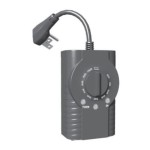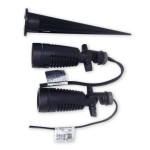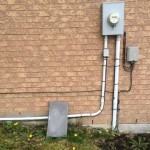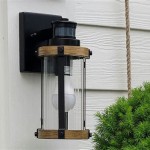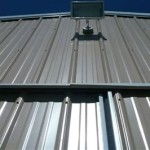Outdoor Tennis Court Lighting Design
Outdoor tennis court lighting design is crucial for creating an enjoyable and safe playing environment. Proper illumination allows players to see the ball clearly, track their opponents' movements, and avoid potential injuries. When designing outdoor lighting, several factors must be considered, including the type of court, the desired level of illumination, and the budget. This article will explore key considerations for outdoor tennis court lighting design, providing insights into various aspects to ensure optimal performance and safety.
Types of Lighting
There are several types of lighting commonly used for outdoor tennis courts, each with its own advantages and disadvantages. Some common options include:
- Metal Halide: Metal halide lights offer high brightness and efficiency, making them suitable for large courts. They are relatively inexpensive but have a long warm-up time and can be prone to flickering.
- LED: LED lights are energy-efficient and have a longer lifespan than other options. They produce high-quality light with excellent color rendering, minimizing shadows and providing clear visibility. They also have a rapid response time, eliminating flickering and contributing to a smooth playing experience.
- High-Pressure Sodium (HPS): HPS lights are another cost-effective option, offering high brightness and durability. They have a longer lifespan than metal halide but produce a yellowish light, which can impact color perception and worsen visibility under certain conditions.
- Fluorescent: Fluorescent lights are energy-efficient and provide a bright, white light. They are often used in combination with other lighting sources to provide supplementary illumination for specific areas.
Illumination Levels and Uniformity
The level of illumination required for a tennis court depends on the type of play, the time of day, and the age of the players. The illumination levels recommended by the United States Tennis Association (USTA) are as follows:
- Professional and Collegiate Play: 100 foot-candles (fc) minimum
- High School and Junior Play: 75 fc minimum
- Recreational Play: 50 fc minimum
The illumination should be evenly distributed across the entire court, ensuring consistent visibility for players throughout the game. Uniformity is critical for optimal performance and safety, minimizing potential issues like glare and uneven shadows that can hinder visibility and create hazardous conditions.
Lighting Placement and Angle
Strategic placement of lighting fixtures is essential for maximizing the effectiveness of the lighting system. The position and angle of the lights directly influence the distribution of light across the court and the potential for glare. Generally, lighting fixtures are mounted on poles or structures surrounding the court. For optimal results, the following principles should be considered:
- Avoid glare: Lighting fixtures should be angled to minimize glare from players' eyes, ensuring clear visibility and reducing eye strain.
- Minimize shadows: Position the lights to minimize shadows on the court, particularly around the net and service lines. Proper placement helps create a well-illuminated playing surface, reducing potential hazards and improving player safety.
- Maximize coverage: The fixtures should be placed to cover the entire court evenly, avoiding dark spots and ensuring consistent illumination for all players.
Additional Considerations
Beyond these core elements, several other factors influence the design and implementation of outdoor tennis court lighting. These include:
- Budget: The type of lighting chosen and the complexity of the installation directly impact the overall cost.
- Environmental Concerns: Energy efficiency, light pollution, and potential impact on surrounding wildlife should be considered.
- Aesthetics: The lighting system should blend seamlessly with the surroundings and enhance the overall visual appeal of the court.
By carefully considering all these factors, you can create an effective and well-designed outdoor tennis court lighting system. This ensures a safe and enjoyable playing experience for all players while minimizing environmental impact and maximizing visual appeal.

The Guide To Sports Lighting Take Tennis Court For Example Agc

Led Tennis Court Lighting Layout Design Guide Sports Venue Calculator

Led Tennis Court Lighting Layout Design Guide Sports Venue Calculator

Led Tennis Court Lighting Layout Design Guide Sports Venue Calculator

Outdoor Tennis Court Lighting Frasure Reps Sports

The Guide To Sports Lighting Take Tennis Court For Example Agc

The Guide To Sports Lighting Take Tennis Court For Example Agc

Tennis Court Lighting Design Indoor Outdoor Kellwood

Best Led Tennis Court Lighting

Led Tennis Court Lighting Layout Design Guide Sports Venue Calculator
Related Posts
